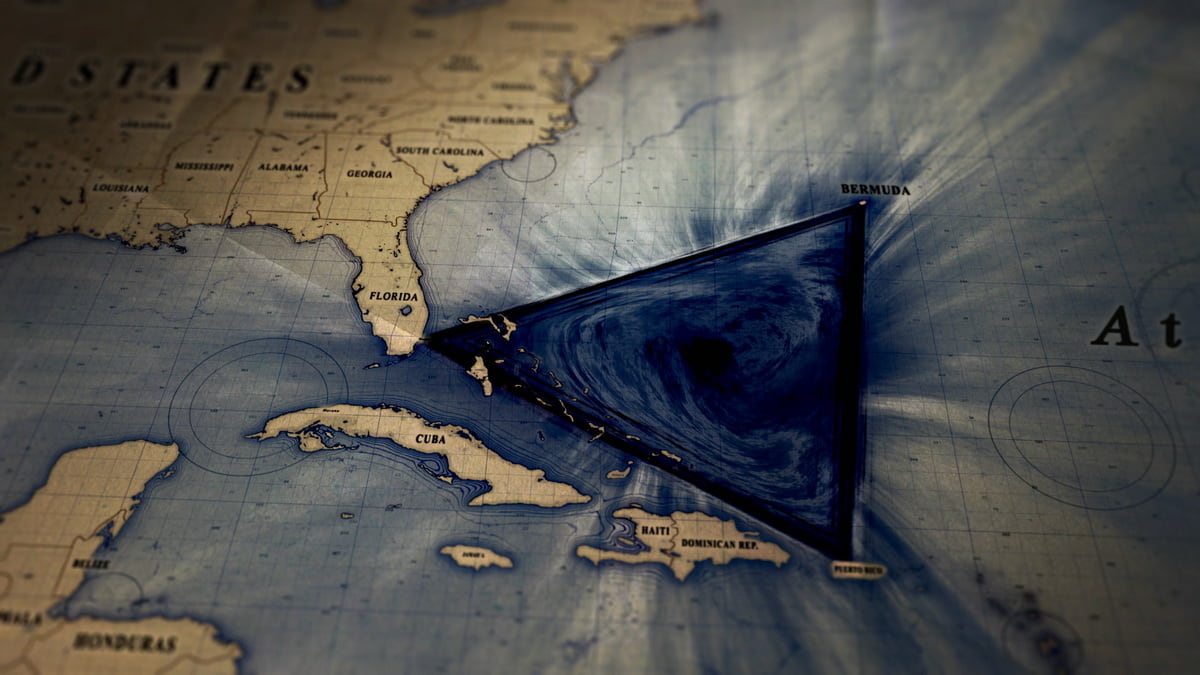Traversing the murky waters of the Atlantic, the Bermuda Triangle, also known as the Devil’s Triangle, covers roughly 500,000 square miles between Florida, Bermuda, and Puerto Rico. This enigmatic triangle has been the subject of speculation and intrigue for centuries, giving rise to legends of mysterious disappearances dating back to the age of discovery. It was on these high seas that Christopher Columbus noted the world’s first recorded anomaly in 1492, observing erratic compass readings and a great flame of fire crashing into the sea — a likely meteor, igniting the triangle’s mystic lore.
In the 20th century, the Triangle entered the collective consciousness as a zone of inexplicable maritime tragedy following the infamous Flight 19 incident in 1945, where five Navy bombers vanished on a training mission. The region, notorious for its unpredictable weather, swift currents, and unique geomagnetic anomalies, has seen over 1,000 lives lost in the last 100 years. These historical touchstones, coupled with modern scientific endeavors to demystify the area’s peculiar reputation, set the stage for an exploration into one of the ocean’s greatest puzzles.
1. The Bermuda Triangle’s Map Debut
The Bermuda Triangle might seem a modern marvel, but its map presence predates its eerie reputation. Initially charted for navigation, this segment of the sea, encompassing Florida, Bermuda, and Puerto Rico, quietly entered the charts before storming into public consciousness in the 20th century.
In the 1960s, the Triangle found its moniker and mystique thanks to journalist Vincent Gaddis. But before its headlines of horror, it was simply a triangular navigational challenge, a convergence of the Atlantic’s currents and the New World’s allure.
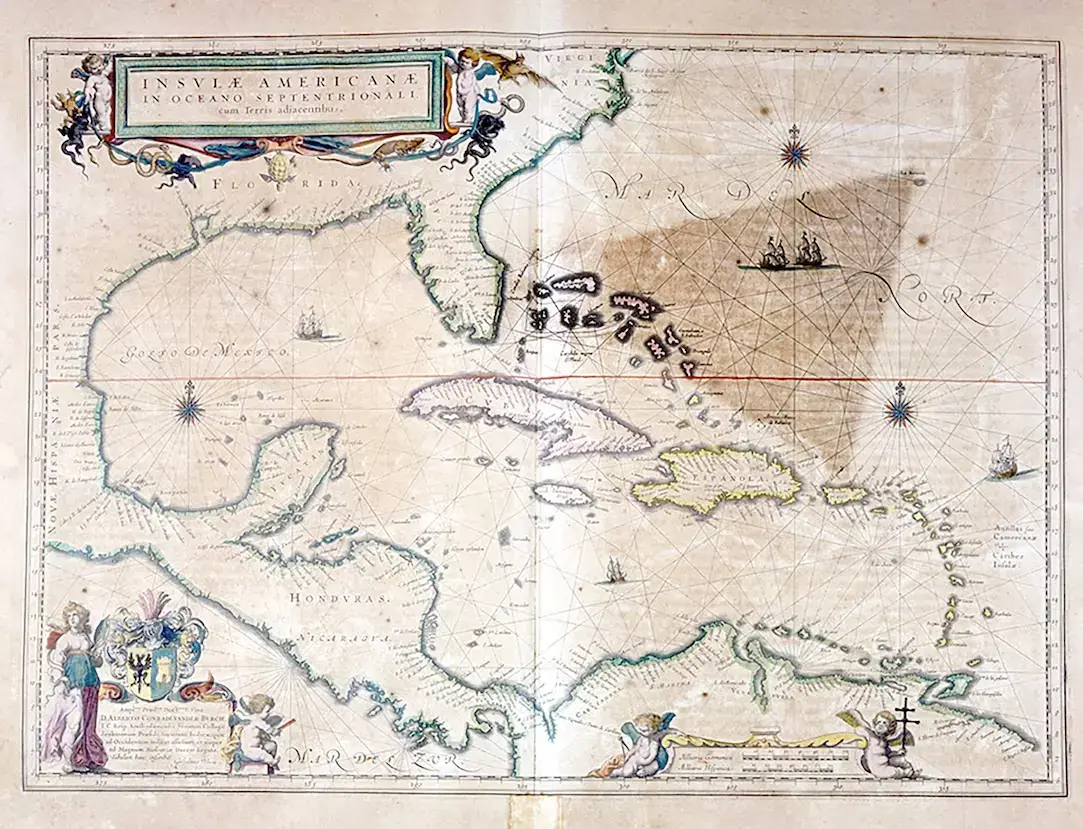
Image: nationalgeographic.com
2. The Curious Case of Christopher Columbus
When Christopher Columbus sailed through the area of the North Atlantic Ocean that would one day be known as the Bermuda Triangle, he documented a series of anomalies. On October 11, 1492, Columbus and his crew observed erratic compass readings, which he noted in his logbooks—a peculiarity that has since been a cornerstone of the Triangle’s mystery. The bewildering compass behavior coupled with sightings of strange lights—possibly from the phenomenon known as St. Elmo’s fire—added to the eerie experience.
Despite numerous theories, these documented observations by Columbus are not entirely understood even today. They’ve been attributed to everything from the region’s unique magnetic fields to the misinterpretation of natural phenomena. Yet, these early records remain a significant historical link to the enduring enigma of the Triangle, laying the groundwork for future speculation and investigation.
3. The Vanishing of Flight 19
December 5, 1945, became a date etched in aviation mystery when Flight 19, a squadron of five torpedo bombers, disappeared into the Triangle’s grasp. The incident sparked one of the largest search and rescue missions of the time, which, paradoxically, resulted in further loss when a rescue plane also vanished.
What happened to Flight 19 has been dissected through the decades, with no conclusive answers. Weather, human error, and the Triangle’s reputed anomalies are all cited, but the lack of physical evidence leaves the story shrouded in speculation, a testament to the enduring puzzle that is the Bermuda Triangle.
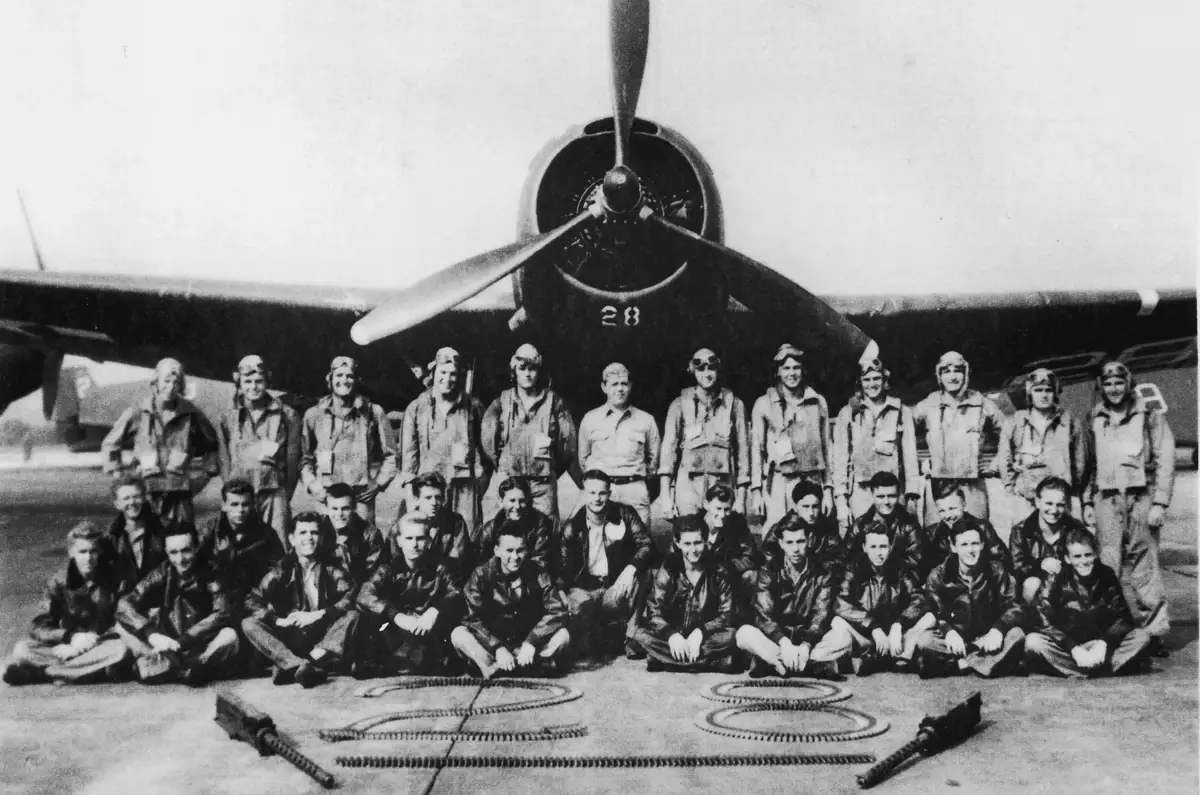
Image: thesun.co.uk
4. The Ellen Austin Ship Encounter
In 1881, the Ellen Austin, an American schooner on its way from London to New York, came upon a derelict ship near the Sargasso Sea, part of the Bermuda Triangle known for its still waters and thick seaweed. The abandoned ship seemed seaworthy, yet eerily devoid of crew, setting the stage for a maritime mystery that persists to this day. The captain of the Ellen Austin made the fateful decision to place a prize crew on board the found vessel with the intention to sail it to New York.
However, as fate would have it, a sudden squall separated the two ships, and when the derelict was eventually relocated, the prize crew had vanished without a trace. Despite multiple attempts to recover the ship and its new crew, all efforts ended in a similar, inexplicable loss. This incident has been thoroughly documented in maritime records and continues to be one of the most intriguing Bermuda Triangle stories, often used as a classic example of the Triangle’s uncanny ability to confound and mystify.
The Ellen Austin’s encounter is notable not just for the disappearance but also for the circumstances of finding a well-equipped ship in good condition, suggesting that the crew’s disappearance was abrupt. It echoes through time as a reminder of the unpredictable nature of the sea and the mysteries that the Bermuda Triangle seems to hold within its depths.
5. The Mysterious Case of the USS Cyclops
The largest loss of life in the history of the US Navy not related to combat occurred in the Bermuda Triangle with the disappearance of the USS Cyclops in 1918. This colossal vessel, with over 300 men aboard, vanished without sending a distress signal, leaving no trace of its whereabouts.
This interesting fact adds to the Triangle’s mystique, feeding the legend that this area of the ocean is prone to the unexplained disappearance of ships. Despite being a century-old incident, the fate of the USS Cyclops has captivated maritime experts and conspiracy theorists alike and is a crucial part of the Triangle’s history.
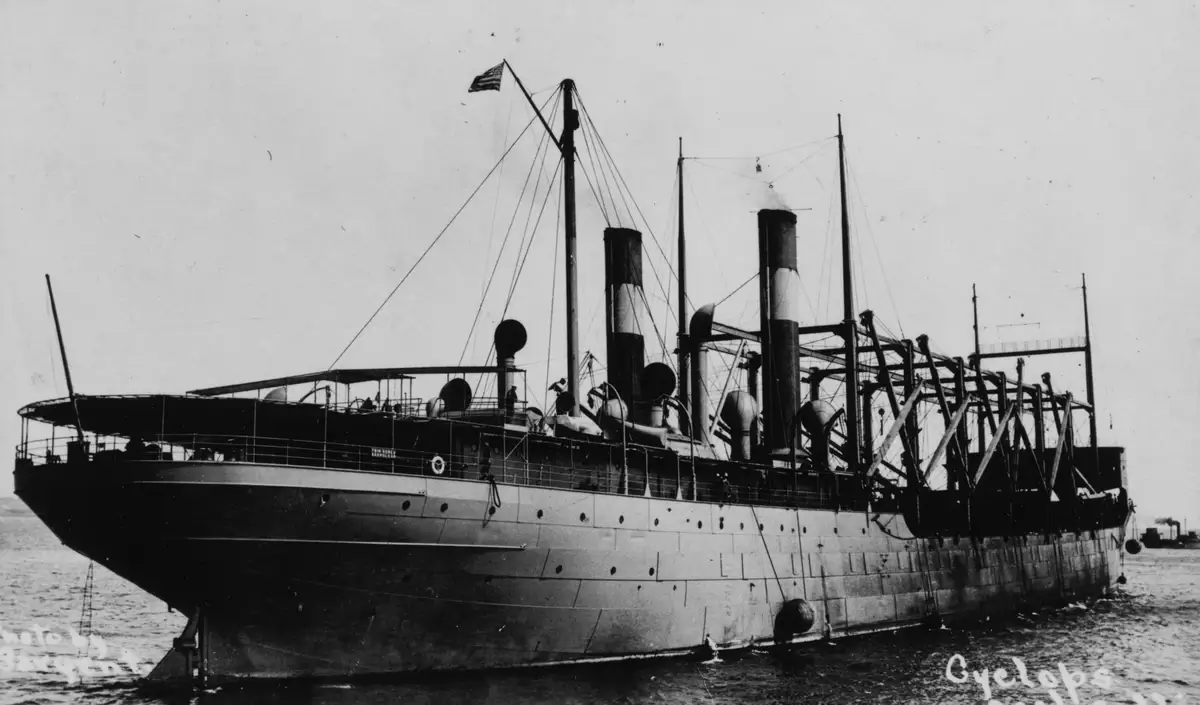
Image: usni.org
6. The Puzzle of The Connemara IV
The sailing yacht Connemara IV became part of the Bermuda Triangle’s lore when it was found adrift in 1955, perfectly intact but without its crew. This mysterious case has been at the heart of Triangle discussions, exemplifying the pattern of mysteriously disappeared vessels and the enigma surrounding such incidents.
The Connemara IV’s crew was never found, and their fate remains an interesting fact that sparks imagination about what could occur within this fabled western part of the North Atlantic Ocean. It’s stories like these that have perpetuated the Triangle’s reputation for otherworldly occurrences and inexplicable phenomena.
7. Bermuda Triangle and Methane Hydrates
In the quest to demystify the Bermuda Triangle, science points to an earthly, albeit dramatic phenomenon: methane hydrates. These icy deposits can erupt, releasing vast quantities of gas and potentially creating a mysterious zone where ships could sink rapidly due to water density changes.
This interesting fact about methane hydrates offers a tangible explanation for some of the disappearances in the Triangle, shifting the narrative from paranormal to geological. It’s a reminder that sometimes, the most mysterious events have their roots not in the stars, but deep beneath the ocean’s surface in the western part of the North Atlantic Ocean.
8. Bruce Gernon’s Electronic Fog Experience
Bruce Gernon’s account of flying through what he described as an “electronic fog” in 1970 is one of the most cited personal experiences within the Bermuda Triangle. Gernon reported that his aircraft became enveloped in a tunnel-shaped vortex, leading to warped time and space perception as he flew from the Bahamas to Miami—a journey that seemingly took less time than possible under normal conditions.
The incident, which remains unexplained to this day, is a fascinating glimpse into the peculiar phenomena reported in the Triangle. Gernon’s experience has been featured in various documentaries and publications, contributing to ongoing discussions about atmospheric anomalies.
9. The Triangle’s Magnetic Compass Issues
Navigators have long been wary of the Bermuda Triangle’s reputation for disorienting compasses. This region is one of the two places on earth where magnetic (compass) north and geographic (true) north align, known as agonic lines, which can lead to navigational errors if not accounted for correctly.
This detail is not just a curious tidbit but a significant factor in maritime history, dating back to the age of exploration. The Bermuda Triangle’s navigational challenges have necessitated advancements in maritime technology, from the humble compass to sophisticated GPS systems used today.
10. The Ghost Ship: SS Marine Sulphur Queen
The disappearance of the SS Marine Sulphur Queen in 1963 is one of the Bermuda Triangle’s more modern maritime mysteries. The tanker, with a cargo of molten sulfur, was known to have structural issues, yet it set sail from Beaumont, Texas, bound for Norfolk, Virginia, never to be seen again.
The loss of the 39 crew members resulted in an extensive Coast Guard search and investigation, which concluded with more questions than answers. The incident added another complex layer to the Bermuda Triangle’s legacy and remains a focus for safety in marine engineering and design.

Image: spiegel.de
11. Flight 441’s Unexplained Disappearance
Flight 441, a Super Constellation Naval Airliner, joined the list of Bermuda Triangle enigmas when it disappeared in 1954 with 42 people on board. The plane was well-maintained and the crew experienced, yet it vanished after a routine communication check while over the open ocean.
This incident led to one of the largest air and sea searches of the time, covering over 200,000 square miles. The mystery of Flight 441 is a stark reminder of the Triangle’s unpredictable nature and continues to be a subject of study in aeronautical circles.
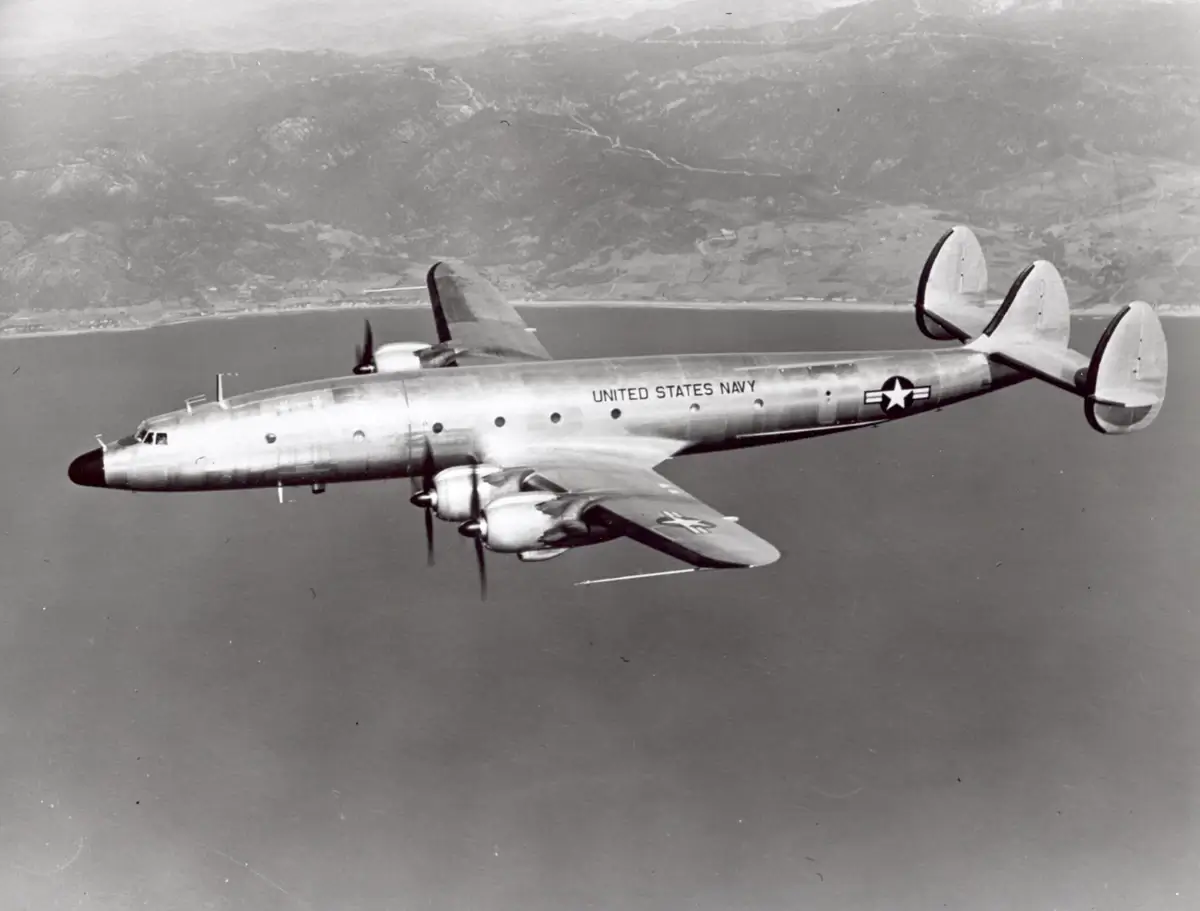
Image: mavink.com
12. The Deep Sea Secrets: Oceanic Craters
The ocean floor beneath the Bermuda Triangle is as enigmatic as the air above it, marked by deep-sea craters. These geological formations are evidence of the violent release of methane gas from the decomposition of organic materials in the seabed—a phenomenon that could account for some of the region’s mysterious disappearances.
Researchers propose that these craters, by rapidly releasing gas, could potentially disrupt the buoyancy of ships, a hypothesis that aligns with natural explanations for the Triangle’s dangers. This insight into the Triangle’s underwater topography is a fascinating piece of the puzzle in understanding the region’s treacherous reputation.
13. The Lost City of Atlantis Link
One of the most captivating theories about the Bermuda Triangle involves the fabled Lost City of Atlantis. Proponents of this theory suggest that remnants of this advanced ancient civilization could be lurking beneath the waves, influencing the area with mysterious energy that causes navigational issues and disappearances. While mainstream science dismisses the idea, the Atlantis link endures in pop culture, adding a layer of mystique to the Triangle’s legend.
The allure of such a mythical connection underscores our fascination with finding “lost” knowledge and the lengths we’ll go to explain the unexplainable within this notorious stretch of the North Atlantic Ocean.
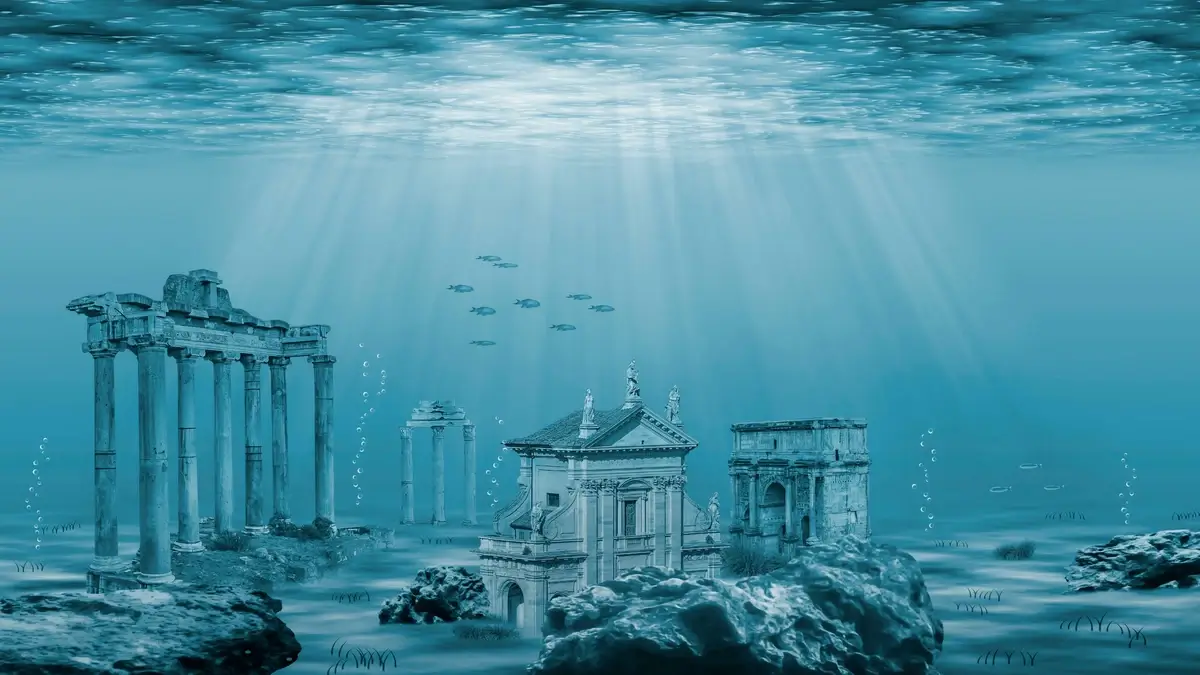
Image: thesun.co.uk
14. The Myth of Insurance Rate Hikes
Contrary to popular belief, insurance companies do not charge higher premiums for vessels transiting the Bermuda Triangle. This myth is pervasive, yet Lloyd’s of London and the US Board of Underwriters have confirmed that the Triangle is not considered a particular risk.
The perpetuation of this myth speaks to the power of the Bermuda Triangle’s reputation; it’s such a staple of maritime lore that it’s assumed to be a financial hazard as well. However, the numbers don’t lie, and the insurance rates remain standard, debunking one more piece of Triangle folklore.
15. The Disappearance of the Star Tiger and Star Ariel
The mysterious vanishing of the Tudor IV aircraft Star Tiger in 1948 and Star Ariel in 1949 remains a chilling chapter in Bermuda Triangle history. Both aircraft were on routine flights and lost without distress signals or debris, leading to speculation about the Triangle’s ominous influence.
These incidents prompted a rigorous review of aviation safety and contributed to the mythos surrounding the Triangle. The absence of clear evidence has allowed for a variety of theories but has also highlighted the era’s aviation challenges and the unforgiving nature of the region’s weather patterns.
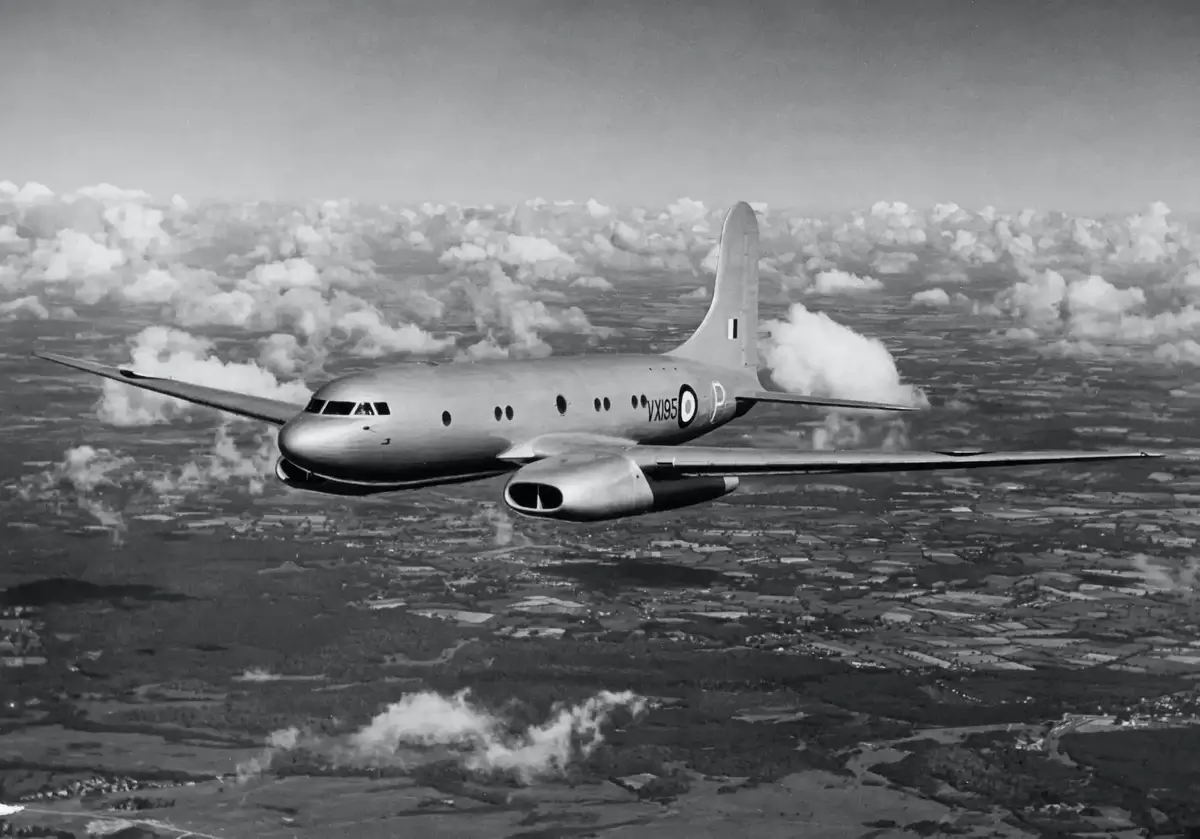
Image: businessinsider.in
16. The Lore of The Witchcraft: A Luxury Yacht
The Witchcraft, a luxury cabin cruiser, called for help a mile off the Miami coast in 1967, citing engine trouble. When the Coast Guard arrived within 20 minutes, the Witchcraft and its two occupants had vanished, spurring tales of the Triangle’s supernatural appetite.
The absence of wreckage or survivors has fueled various theories, from rogue waves to alien abductions. The Witchcraft incident embodies the Bermuda Triangle’s enigmatic draw—its ability to invoke the supernatural as an explanation for maritime mysteries.
17. The Bermuda Triangle in Pop Culture
The Bermuda Triangle’s influence extends far beyond maritime logs and pilot reports; it has become a fixture in pop culture, inspiring countless books, movies, and television shows. The Triangle’s ability to evoke a sense of mystery and danger has made it an attractive setting for storytelling, from episodes of “Star Trek” to the film “The Triangle.”
This region’s pop culture presence often blurs the lines between reality and fiction, but it also reflects our collective fascination with the unexplained and our appetite for adventure and mystery in the North Atlantic Ocean.
18. The Triangle’s Weather Extremes
The Bermuda Triangle is notorious for its sudden and severe weather changes, which can create perilous conditions for even the most experienced sailors and aviators. The area is prone to intense storms, waterspouts, and rogue waves that can arise without warning, challenging the limits of human navigation and survival.
These weather extremes are a critical and tangible factor in the Triangle’s history of disappearances. Understanding these meteorological phenomena is essential for scientists and researchers in unraveling the practical mysteries of the Bermuda Triangle, beyond the myths and legends.
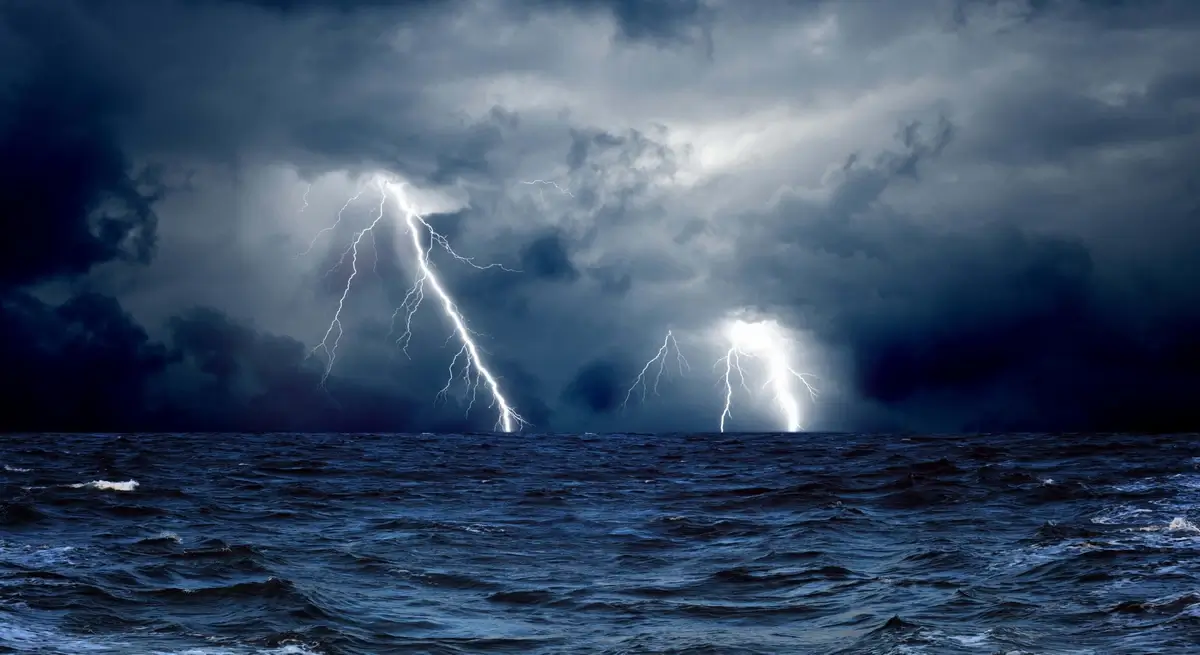
Image: wallpapers.com
19. The Lighthouse That Saw It All: The Great Isaac
The Great Isaac Lighthouse stands on a small Bahamian island, bearing silent witness to countless ships and planes that have traversed the Bermuda Triangle. Erected in 1859, this lighthouse has seen over a century and a half of maritime history, including the infamous period of mysterious disappearances.
The lighthouse itself is shrouded in tales of tragedy, such as the disappearance of its keepers in 1969, adding to its mystique. The Great Isaac Lighthouse serves as a historical landmark, its light a symbol of both guidance and the enduring enigma of the Bermuda Triangle.
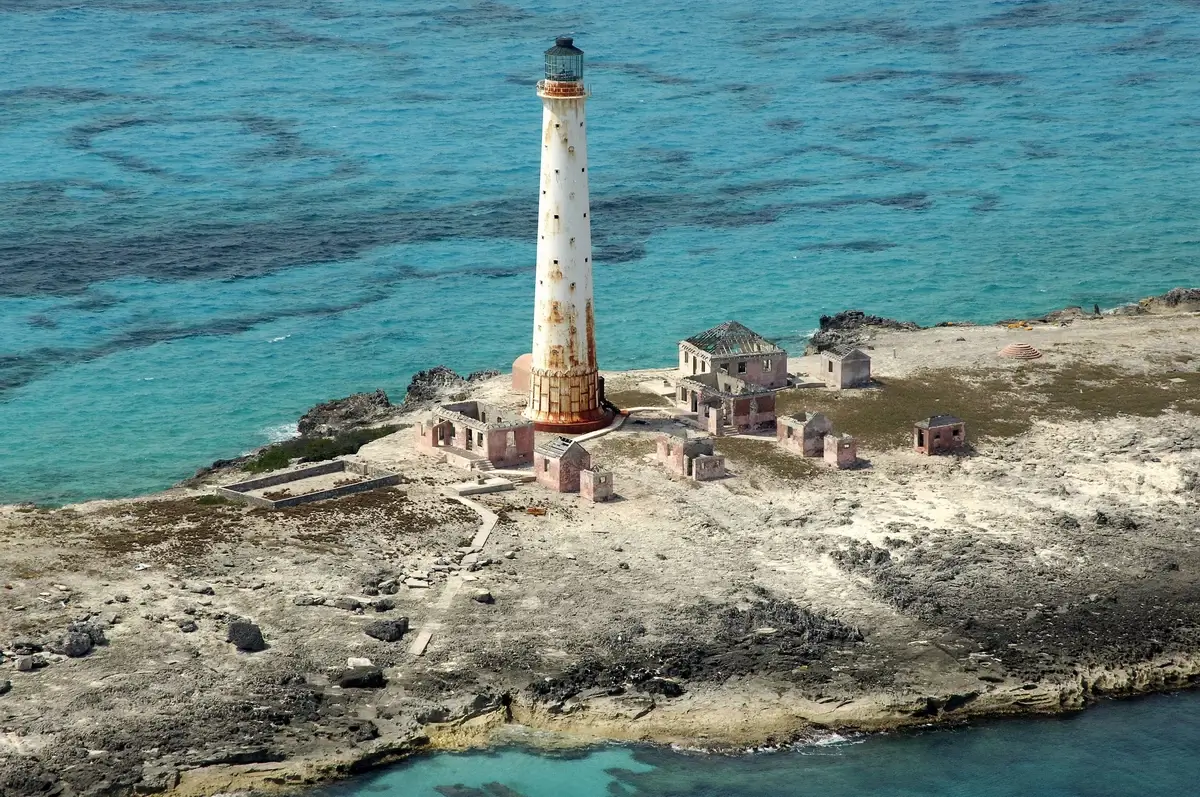
Image: marinas.com
20. The Bermuda Triangle and Space-Time Warp Theories
Space-time warp theories provide one of the most intriguing explanations for the Bermuda Triangle’s lore. Enthusiasts and theorists have posited that the Triangle could be a hotspot for a rift in the space-time continuum, potentially leading to the many unexplained disappearances. This conjecture has been fueled by reports of lost time, navigational instruments going haywire, and vessels reappearing after being presumed lost.
While these theories verge on science fiction, they capture the imagination and have prompted some scientific dialogue about the limits of our understanding of physics. The Bermuda Triangle continues to be a focal point for both skeptics and believers in exploring the boundaries between known science and the possibilities of the universe.
21. The Unsolved Mystery of the Carroll A. Deering
The schooner Carroll A. Deering is often cited among the Bermuda Triangle’s most intriguing enigmas due to its discovery in 1921, run aground and abandoned off the coast of North Carolina, near the Triangle’s periphery. The vessel’s crew was nowhere to be found, and their disappearance became one of the sea’s greatest mysteries. The Deering’s final voyage, from Rio de Janeiro to Norfolk, was fraught with signs of unrest and potential mutiny, yet the reasons behind the crew’s disappearance remain a topic of speculation.
The investigation that followed turned up more questions than answers, with theories ranging from piracy to paranormal activity. The Deering’s fate, still unsolved, underscores the unpredictable and often treacherous nature of maritime travel within and near the confines of the Bermuda Triangle, captivating historians and mystery lovers alike.
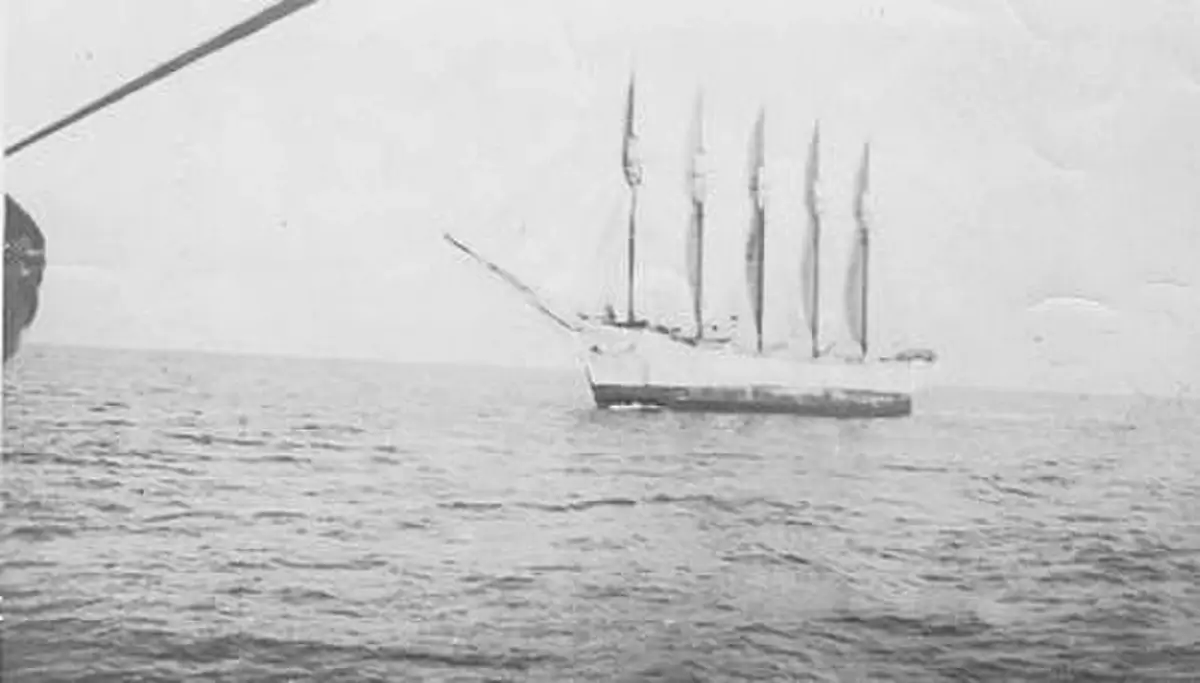
Image: Wikimedia Commons
22. The Intriguing Science Behind the Bermuda Triangle
The enigma of the Bermuda Triangle often overshadows the scientific phenomena that could explain many of its mysteries. Researchers have investigated everything from geomagnetic anomalies to the topology of the ocean floor in seeking explanations. For instance, the area’s susceptibility to rogue waves—massive walls of water that occur with little warning and can be highly destructive—has been well-documented and could account for some of the sudden disappearances of ships.
Additionally, the Gulf Stream, a strong ocean current that flows through the Triangle, is known for its powerful force and could easily sweep away vessels and debris, leaving little trace. These natural explanations provide a grounding in reality for many of the stories that have been sensationalized over the years and remind us that nature’s forces often surpass even the most far-fetched tales of human invention.
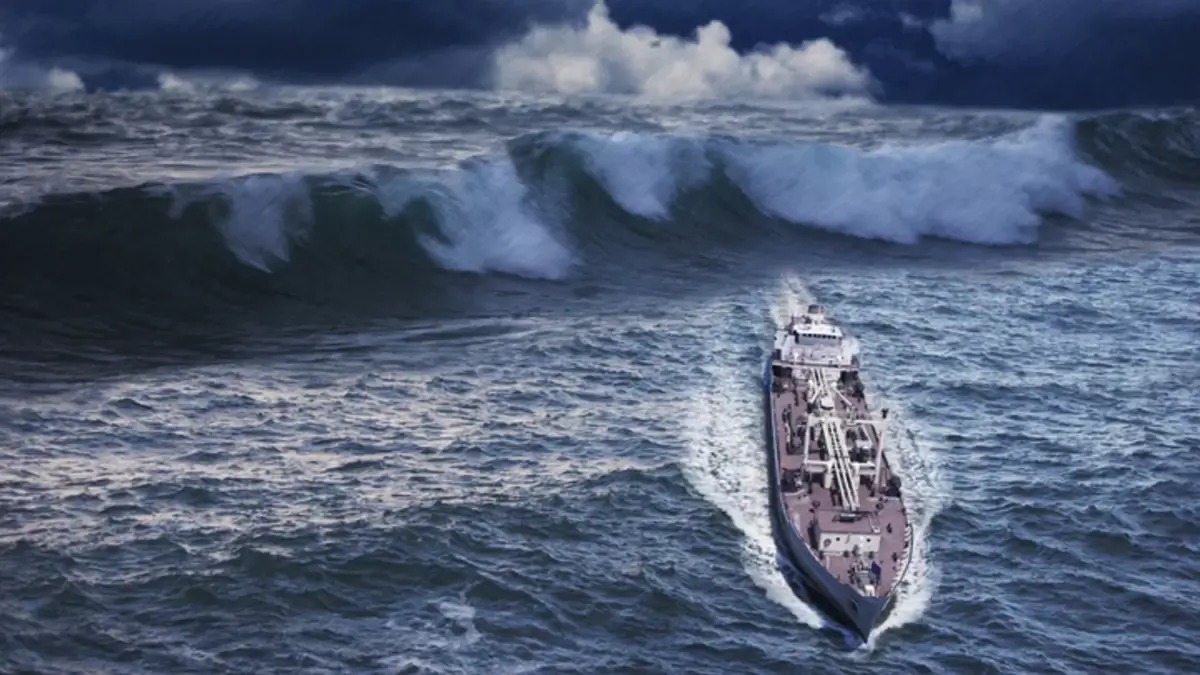
Image: mentalfloss.com
23. Radio Anomalies and the Triangle
Communication disruptions are a hallmark of Bermuda Triangle lore. Pilots and sailors have reported losing contact with the outside world, experiencing periods of radio silence or encountering mysterious static. These anomalies in radio communication can be as transient as they are perplexing, sometimes lasting just long enough to sow a seed of panic.
Scientists have looked into various causes, such as atmospheric conditions unique to the area that could lead to such interruptions. Sudden ionospheric disturbances, for instance, can dramatically affect radio signals. These insights offer a more scientific perspective on what many might deem supernatural, grounding the Triangle’s mystique in the realm of natural science.
24. The Sea’s Mercy on Joshua Slocum
In 1909, Joshua Slocum, the first man to sail solo around the world, embarked on a voyage through the Bermuda Triangle and was never seen again. However, before this final mysterious journey, Slocum had successfully navigated through the Triangle multiple times. His survival and navigation skills were exceptional, and he often recounted the treacherous weather and the erratic behavior of his compass within the Triangle’s bounds. Slocum’s tales contribute to a nuanced tapestry of the Triangle—one that intertwines the fates of those who traverse its waters.
His earlier successful voyages remind us that while the Triangle may hold mysteries, it also bears routes that many have navigated safely, time and time again. Slocum’s accounts provide valuable insights into the navigational challenges posed by the Triangle, challenging mariners to this day.
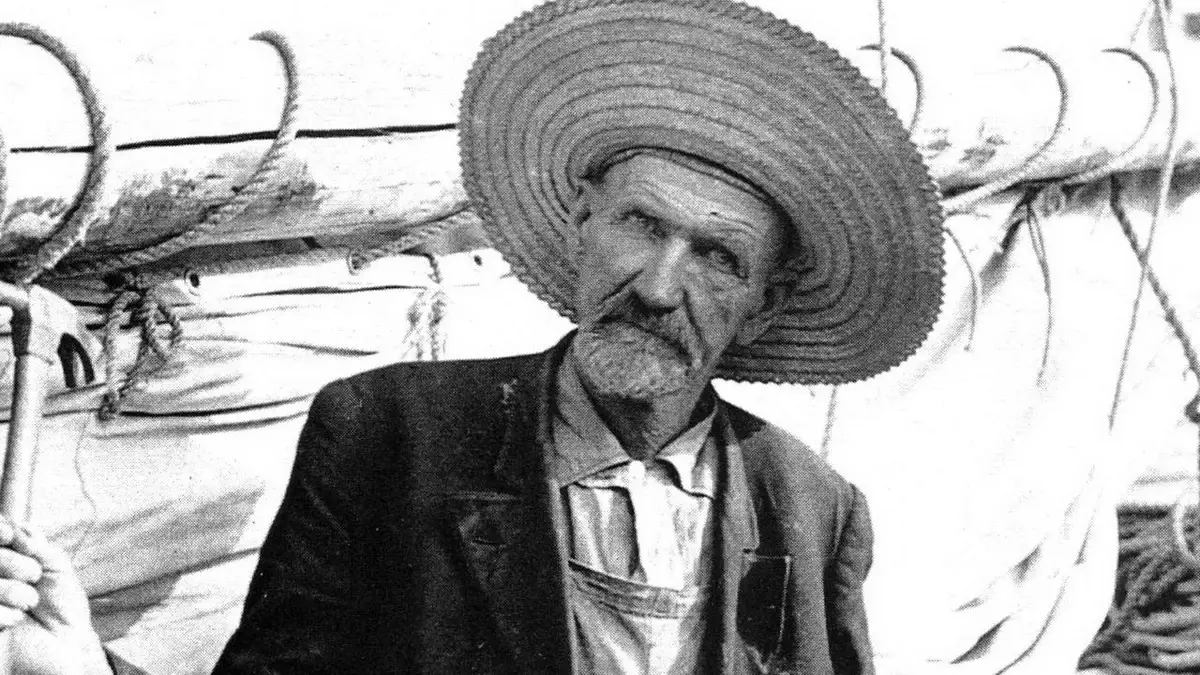
Joshua Slocum. Image: dailytelegraph.com.au
25. The Phenomenon of Ship Reappearances
Interestingly, the Bermuda Triangle is also known for the peculiar phenomenon of ship reappearances. One of the most notable is the case of the schooner Rosalie, found adrift in 1840. The vessel was in perfect condition with its cargo intact, but without a soul onboard. Similarly, in 1881, the Ellen Austin supposedly encountered an abandoned ship that vanished and then reappeared minus the prize crew they had put aboard.
These incidents offer a glimpse into the Triangle’s strange pattern of events, suggesting not just unexplained disappearances but also eerie reemergences. Such accounts have led to various hypotheses, ranging from environmental factors to human error, each adding to the rich lore surrounding the Triangle.
FAQ
Where is the Bermuda Triangle located?
The Bermuda Triangle is a loosely defined region in the western part of the North Atlantic Ocean. The vertices of this imaginary triangle are often considered to be Miami, Florida; Bermuda; and San Juan, Puerto Rico. This area covers approximately 500,000 square miles of ocean, a space riddled with tales of mysterious disappearances.
How deep is the Bermuda Triangle?
The depth of the Bermuda Triangle varies significantly due to its vast area. The deepest point within the Triangle is the Milwaukee Depth in the Puerto Rico Trench, which plunges to about 27,500 feet (8,229 meters) below sea level. This trench is the deepest part of the Atlantic Ocean and one of the deepest points in all of the Earth’s oceans.
Why is the Bermuda Triangle dangerous?
The perceived danger of the Bermuda Triangle stems from the numerous accounts of aircraft and ships that have disappeared under mysterious circumstances. Factors contributing to its notoriety include unpredictable weather, strong Gulf Stream currents, and navigational challenges. While many of these incidents have been attributed to environmental factors and human error, the Triangle’s reputation for danger is more a product of myth than of any measurable risk compared to other heavily traveled regions of the world.
What happens in the Bermuda Triangle?
The Bermuda Triangle has been associated with an unusually high number of vessels and aircraft either disappearing or meeting with accidents. While many believe these incidents to be a result of paranormal activity or extraterrestrial interventions, scientific investigations have not found evidence to support these theories. Instead, most occurrences can often be explained by natural phenomena such as hurricanes, waterspouts, rogue waves, and the area’s deep underwater trenches.
Has any large ship or plane ever been found in the Bermuda Triangle?
Despite its reputation, there have been recoveries of ships and planes in the Bermuda Triangle. In many cases, the remains of missing vessels have been located, although sometimes these discoveries take years or decades. Advances in technology, like deep-sea submersibles and sonar, have aided in these recoveries, providing closure to some of the mysteries.
Are there scientific explanations for the disappearances in the Bermuda Triangle?
Yes, there are several scientific explanations for the disappearances in the Bermuda Triangle. These include natural geographic and meteorological conditions such as the Gulf Stream, which is a strong ocean current known to rapidly carry objects away, and methane hydrates, which can reduce the water’s density, causing ships to sink. Compass variations, water spouts, and human error have also been cited as plausible reasons for some of the incidents.
How do the stories of the Bermuda Triangle affect navigation and travel today?
Today, the stories of the Bermuda Triangle are often taken with a grain of salt by professional sailors and aviators. Modern navigation and weather forecasting technologies have significantly reduced the mystique of the area. While the tales of the Bermuda Triangle still capture the public’s imagination, they have little impact on the actual operation of ships and aircraft, which routinely pass through the region without incident. The U.S. Coast Guard and Navy do not recognize the Bermuda Triangle as a zone of extraordinary maritime peril.


